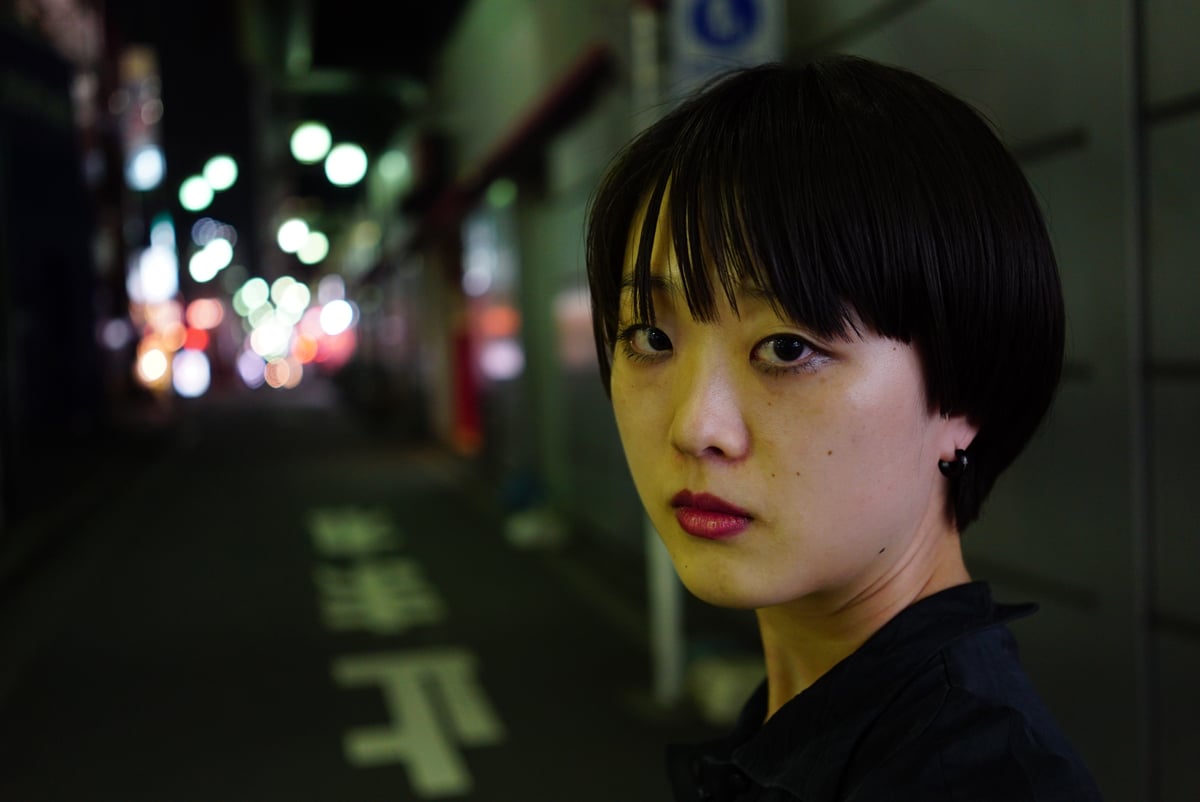
Photo: Courtesy of the artist / Daido Moriyama Photo Foundation, via Fondation Cartier
Daido Moriyama, Tokyo Color (2008-2015)
Photo: Courtesy of the artist / Daido Moriyama Photo Foundation, via Fondation Cartier
Thirteen years after their first survey exhibition dedicated to Daido Moriyama, the Cartier Foundation’s follow-on show privileges the Tokyo-based photographer’s less-known works in color.
The large metal-backed prints of Tokyo Color (2008–2015) are shown in clusters on a freestanding display grid in the glass-walled gallery, as immediate as advertising hoardings. Accompanying this, a side room houses Dog and Mesh Tights (2014–15) a twenty-five minute “slide show” of black and white images broadcast on two pairs of screens.
Since the 1968 publication of his very first book Japan: A Photo Theater, it could be argued that Moriyama’s defining medium is the photo book rather than the photograph as isolated artifact. The endless churn of images he creates is merely the raw material for constructing the series and arrangements that comprise the artworks themselves.
Tokyo Color and Dog and Mesh Tights, then, are perhaps better considered as two total works, rather than two series. Each image within them is at once merely a detail of the overall work, and part of a larger material resource that might be drawn on again at a later date.
Daido Moriyama, Tokyo Color (2008-2015)
Photo: Courtesy of the artist / Daido Moriyama Photo Foundation, via Fondation Cartier
Captured on his daily dérives, Moriyama’s candid, hastily grabbed street scenes are most familiar as black and white prints, but the original images are often captured in color, particularly as the photographer has migrated to digital over the last two decades. Here, the use—or not—of color in the exhibited images signals part of a significant series of distinctions between the two works.
Shown in a dark room against a soundscape of street noise, Dog and Mesh Tights gives an intimate dog’s-eye-view of six cities around the world, all shot within a nine-month period. The transient pairings of images that emerge as the “slides” change on each screen pay no heed to particulars of geography, selected instead for aesthetic affinity or emotional effect: drying overalls flash up beside a crouched skeleton; an oddly human-shaped tangle of vines on a telephone wire next to a man sleeping in the street. Presented vertically, in black and white, and seen only through their details, the cities merge into one: they could all be Tokyo, or perhaps LA.
Daido Moriyama, Tokyo Color (2008-2015)
Photo: Courtesy of the artist / Daido Moriyama Photo Foundation / Fondation Cartier
The streets shown in Tokyo Color, by contrast, are all from Shinjuku—Moriyama’s own neighbourhood, and his abiding creative obsession.
After fifty-five years photographing the streets of Tokyo, the city seen through Moriyama’s lens has its commonplaces: the image of an image, torn, folded and seen through glass or plastic mesh; warped grids; the single shoe, kicked off kerbside; the sensual, disembodied mouth; the fat tangle of ventilation pipes squirming from the sides of a building like glimpsed entrails.
All are present here, some in both works, yet just as a city itself is always the same yet constantly changing, so the familiar Moriyama tropes shift and evolve. Heaped piles of tat include tchotchkes based on Internet memes; a line of fashionably dressed young men at the kerb’s edge wear of-the-moment trainers.
Daido Moriyama, Tokyo Color (2008-2015)
Photo: Courtesy of the artist / Daido Moriyama Photo Foundation, via Fondation Cartier
Moriyama attributes his affection for black and white, in part, to its power to make an image abstract, distant, and dreamlike. Here we see a corresponding reversal. Shinjuku in unforgiving color is abject and slatternly. The exposed flesh of pornographic posters blends into the furniture of the street, the forms of crooked knees and rounded thighs echoed in adjacent pictures of metal air conditioning tubes.
A nature-themed triptych offers a desiccated vine and queasy looking raven either side of bulbous yellow palm shoot bursting from a pubic tangle of brown fibres. Elsewhere, a bloated crocodile sits in a drained concrete pen, a stale yellow puddle of something beneath its abdomen—perhaps it’s piss, or perhaps the crocodile is dead and become oozy. Here, amid the slumped street drunks, gaffer tape gimp masks, and rusting fridges, any nasty thing seems possible.
Daido Moriyama, Tokyo Color (2008-2015)
Photo: Courtesy of the artist / Daido Moriyama Photo Foundation, via Fondation Cartier
In color, Moriyama is harsher: cruel, even. He does not hide his role as voyeur—his shadow appears on the pavement as he captures a patterned post against a silhouetted grid of overhead wires, his form is outlined as it blocks glare bouncing off strips of developed film; he’s even visible in a distant mirror behind sprayed loops of graffiti.
After decades of fascinated observation, Tokyo Color shows Moriyama as a constituent part of this decaying scene, rather than mere curious onlooker.
“Daido Moriyama: Daido Tokyo,” Fondation Cartier pour l’art contemporain, February 6 – June 5